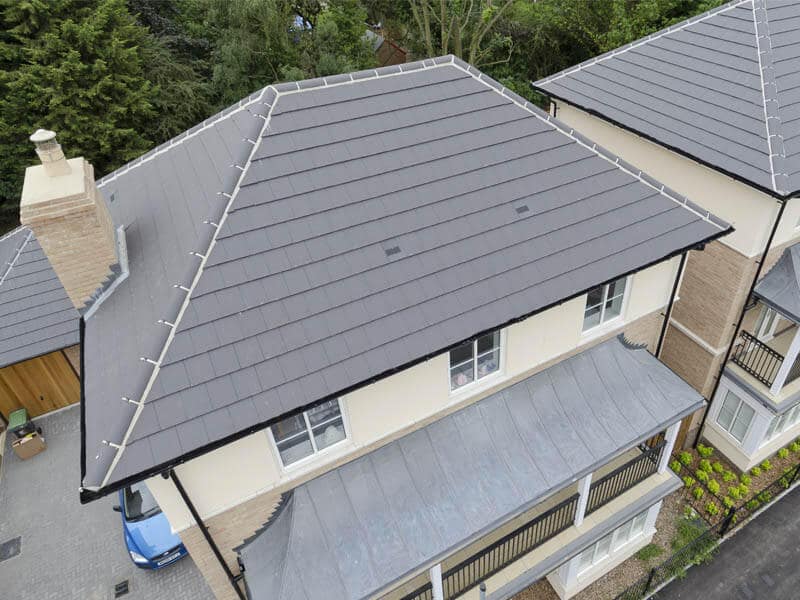How does the position of thermal insulation affect pitched roof system design?

While thermal insulation is not typically one of the components offered by a pitched roof system manufacturer, its placement within the roof structure has a say in how the roof system is designed. It can impact on both ventilation and underlay specification, changing the way in which the movement of moisture vapour and the risk of condensation is controlled.
What are the two main categories of pitched roof design?
A cold pitched roof is one where the loft area is not a habitable space. Insulation, usually a flexible material that can be rolled out, is installed between and over the ceiling joists forming the ‘floor’ of the loft space. The loft is colder than the internal temperature of the building below and suitable only as limited storage space.
By contrast, a warm pitched roof sees the thermal insulation, usually in the form of a rigid board product, installed along the line of the sloping rafters. The loft is a heated space within the thermal envelope of the building, used as a habitable room.
Ventilation of a pitched roof has to occur on the cold (i.e. external) side of any thermal insulation, otherwise the air movement will simply remove warm heated air from the building and increase energy use and bills.
How do cold and warm roofs change pitched roof system specification?
In a cold roof, the open loft space provides greater opportunity for air movement and effective ventilation. It may even be possible to rely on eaves ventilation alone, without ridge ventilation.
Using the same logic, a warm roof with insulation between the rafters provides a more limited scope for achieving effective air movement. It relies on the depth of rafter that remains available above the insulation and will likely necessitate ventilation provision at both eaves and ridge.
The range of available underlays has changed to reflect developments in product design and manufacture. Alongside traditional ‘non-breathable’ underlays, membranes have been developed to be vapour permeable, and also air permeable. As well as controlling moisture levels and reducing condensation risk (vapour permeable), an air and vapour permeable underlay can provide supplementary ventilation to that at the eaves and ridge.
In some circumstances, such as a warm roof with a well-sealed ceiling and suitable air and vapour control layer, the underlay may be able to provide the ventilation provision alone. Advice should be sought from the manufacturer, based on product testing and third-party certification - which highlights the benefit of working with a supplier of a complete pitched roof system, who can ensure the whole specification is designed for the specific project requirements.
Marley provide a comprehensive pitched roof system specification service, and is the only UK manufacturer to produce all of its own system components and test them in-house to establish their performance. To find out more, contact us, request free product samples, or find your nearest stockist from our nationwide supplier network.
Disclaimer - The information shared in this blog is correct at the time of publication. Guidance, standards, and best practices may change over time, so if you’d like further clarification or the latest updates, please get in touch with the Marley Technical Advisory Team, who will be happy to help.
Category: Roofing